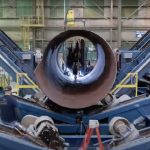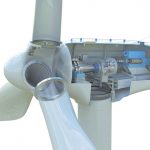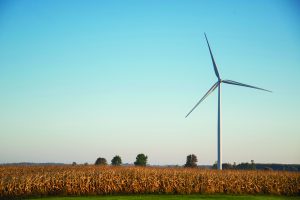The clean energy and STEM (science, technology, engineering, and mathematics)-focused competition challenged more than 150 students at 10 universities across the country to design, test, and build a small wind turbine.
Throughout three days of intense competition at the American Wind Energy Association’s annual conference, the teams put their wind turbines through rigorous performance testing, developed carefully-crafted business plans and pitched wind industry leaders on the market opportunities for their turbine designs. As the team with the highest cumulative score, Pennsylvania State’s winning turbine will be displayed at Energy Department headquarters in Washington, D.C.
“Through student challenges like the Collegiate Wind Competition, we are not only engaging college students to develop an interest in clean energy, we are also developing the next generation of clean energy engineers, scientists and business professionals,” said Energy Secretary Ernest Moniz. “I congratulate our first Collegiate Wind Competition champion as well as all of the participating teams on their hard work.”

Each Collegiate Wind Competition team was comprised of engineering and business students. Experts including business executives, project and technology developers, scientists, and engineers judged each team.
The competition consisted of three main events, each covering a different segment of involvement in the wind energy industry.
In the first event, teams submitted documents to judges who will assess their concepts and designs for a small, operable wind turbine. Their actual turbines were then tested in a variety of conditions using an on-site wind tunnel.
Teams were then required to deliver a public presentation proposing solutions to market barriers facing the wind industry.
In the final event, the teams were challenged with devising and pitching a cohesive business plan for their turbine to judges and audience members.

Rounding out the top three finishers was the University of Kansas, in second place, and the University of Massachusetts Lowell, in third. In addition, the following schools were recognized as top finishers in the following categories:
• Market Issue Presentation: Pennsylvania State University
• Business Plan Development: University of Kansas
• Turbine Design and Testing: University of Kansas
Penn State was also crowned as the People’s Choice winner—the audience’s pick for the best business “pitch” presentation.
Other schools participating in the competition were Boise State University, California Maritime Academy, Colorado School of Mines, James Madison University, Kansas State University, Northern Arizona University, and the University of Alaska-Fairbanks.
For more information about the Collegiate Wind Competition and how the Energy Department is advancing the state of wind energy technology, visit www4.eere.energy.gov/wind/windcompetition/home and www.energy.gov/eere/renewables/wind.








































